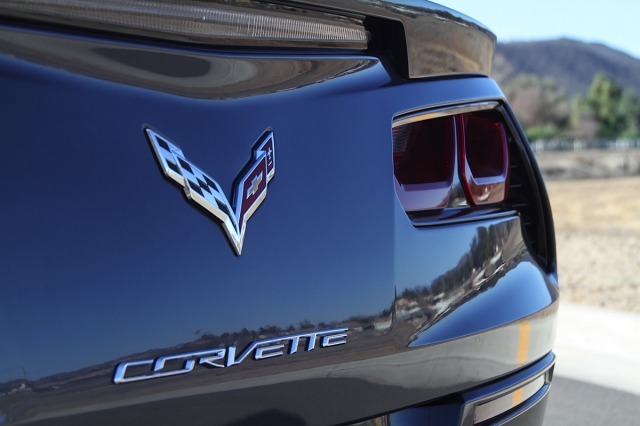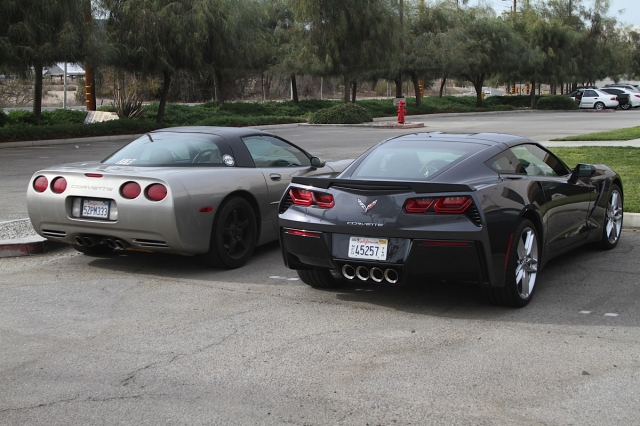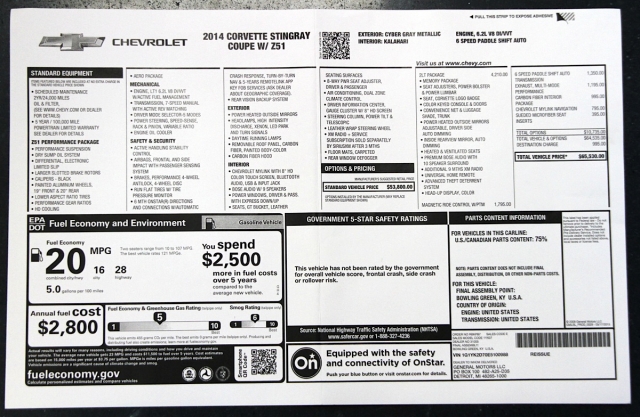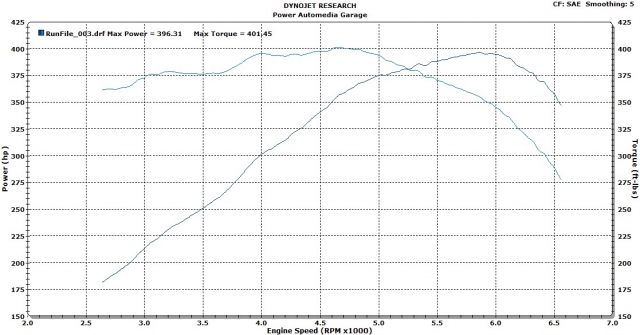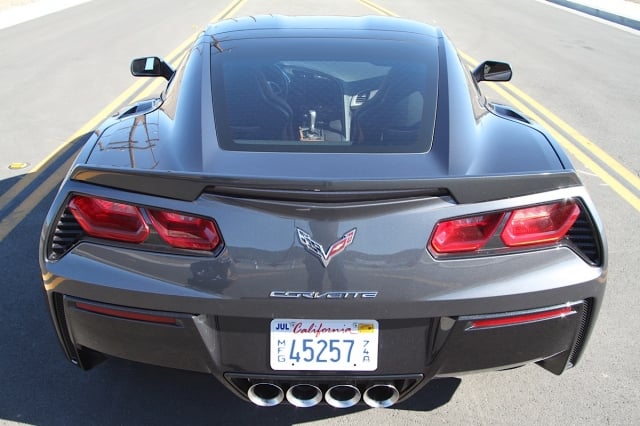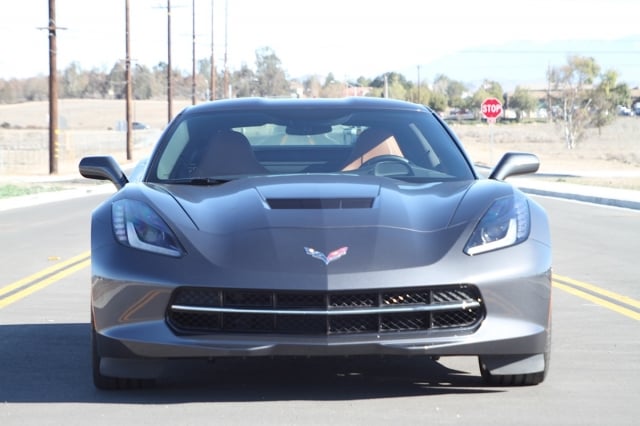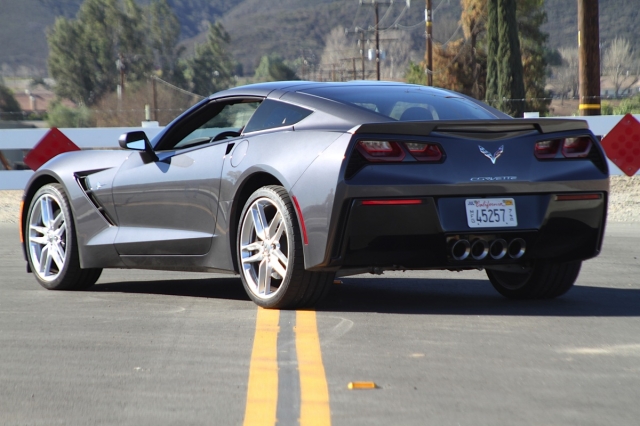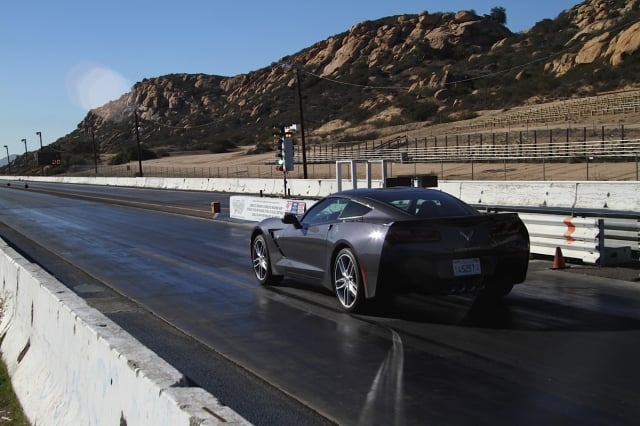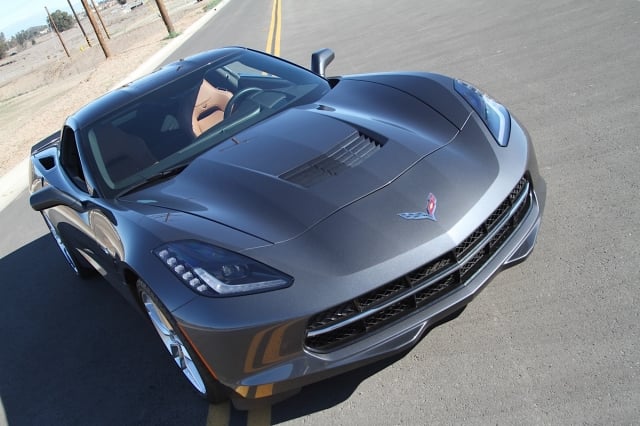Through some failure in the internal GM process used to vet (pun intended) the members of the media who are loaned new cars and trucks, I ended up with the chance to borrow a brand new 2014 Corvette for a week. What follows are my observations for this extended test drive…
Day One. A very nice man from the GM fleet agency hands me the keys to a Z51 coupe. All work in the office comes to a complete halt as everyone takes turns poking at the controls like Polynesian cargo cultists.
The car we’ve been loaned is equipped with the 6-speed automatic – a good representation of the “as delivered” C7 fleet so far, with the majority of buyers opting for two pedals and the Z51 Performance Package. It’s also optioned up with the 2LT package, Magnetic Ride Control, the multi-mode exhaust, carbon fiber interior trim, MyLink satnav, and sueded microfiber seat inserts, adding a whopping $10,735 to the $53,800 base price. Including destination charge, the bottom line is an MSRP of $65,530.
Settling into the standard “GT” bucket seat, I can confirm from personal experience that my 99th-percentile, 6 foot 3 inch, 300 pound lump of a body fits within the envelope provided for the C7 driver. Everything’s within reach, even with the seatbelt ratcheted tight, and the seat is comfortable enough once the myriad adjustments are tweaked to my preference. But I still like my C5 seat better, and I know I am in the minority. Maybe it’s just getting used to something new, or maybe my old Corvette has just finally given in and made the accommodations necessary to conform in minute detail to my lumpy shape.
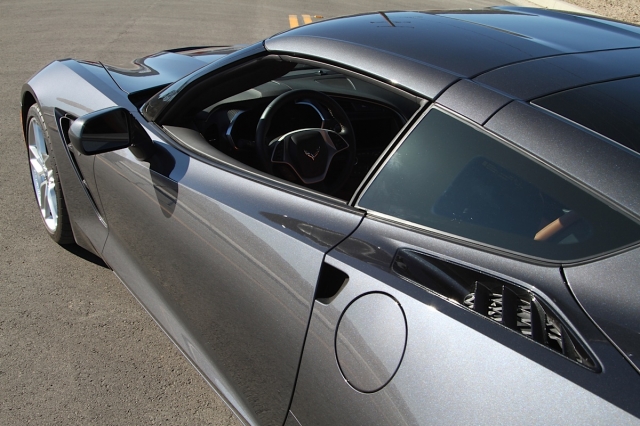 The real test will be driving this car on my 56-mile-each-way freeway commute. There’s no question this car is going to be fun to drive when you lean on it, but I want to know if it’s a car you’ll love enough to enlist for daily driver use when you have something else in the garage – “The Stingray is really nice, but it’s just less of a hassle to take the [insert name of anonymous crossover trucklet here]…”
The real test will be driving this car on my 56-mile-each-way freeway commute. There’s no question this car is going to be fun to drive when you lean on it, but I want to know if it’s a car you’ll love enough to enlist for daily driver use when you have something else in the garage – “The Stingray is really nice, but it’s just less of a hassle to take the [insert name of anonymous crossover trucklet here]…”
Day One. With a total of less than 20 minutes of seat time, I manage to accidentally hit the OnStar SOS button while trying to adjust the mirror in the dark as I drive home. The very nice operator accepts my sincere apology and says, “it happens all the time…”
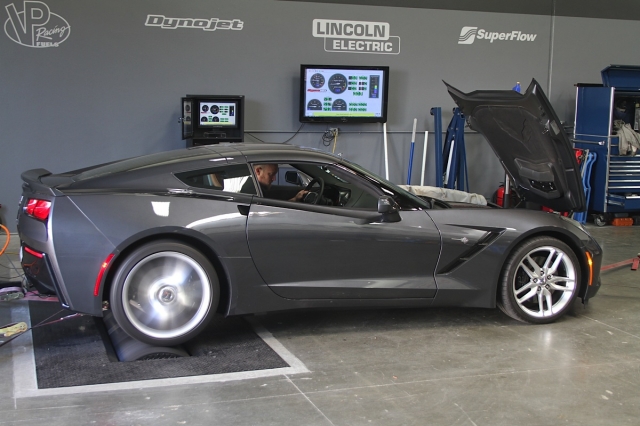 The learning curve for the dash and infotainment system is as steep as it gets. Frankly, I am too lazy to do the math and figure out how many different combinations of dashboard, heads-up display, and touch screen configurations are possible, so let’s just call it trillions; that can’t be far off.
The learning curve for the dash and infotainment system is as steep as it gets. Frankly, I am too lazy to do the math and figure out how many different combinations of dashboard, heads-up display, and touch screen configurations are possible, so let’s just call it trillions; that can’t be far off.
New C7 owners will probably spend their first week behind the wheel with one eye on the road and one in the cockpit, flipping through instrument panel “pages” and poking at the touch screen. I’ll bet, though, that once they find some layout they like, they’ll stick with it and never change it again. Which is probably good, because with a car like this, you need fewer distractions, not more.
The deep integration and complexity of the electronics also brings up some questions about how gracefully it will all age. I grew up in an era when every car had an analog dashboard clock, and none of them ever worked. I can’t help but wonder if all the content in cars like this is the modern equivalent.
By bringing the same sort of functionality to the dashboard as we have in our smartphones, have automakers made a critical error? By the time your phone has gotten buggy and slow, it’s time to replace it with the new hotness. But cars have a much longer lifespan, and when the applications are so integrally tied into every aspect of the car’s operation, glitches are going to be a showstopper.
Day Two. Two kids in a Scion TC give me my first thumbs-up, but the rest of commuting traffic seems oblivious to how awesome I am. Changing lanes in a $65k borrowed car is nerve-wracking due to the size of the right-side blind spot.
Let’s get this out of the way: Abandon all hope of directly observing anything from the 3:15 to 8:45 positions. Seriously. Go back to back from a C7 to a C5/C6 and you will be stunned at how much better the rear hemisphere visibility is in the older cars. The Stingray absolutely needs its backup camera, and could really use the side blind zone alert available on GM trucks and SUV’s. Used to driving my 2000 Corvette, I keep making head checks before changing lanes in the C7, only to be thwarted by the C-pillars. Solution? Drive fast enough that nobody can approach you from behind, of course!
Day Three: Letting the other editors take the car for “a quick spin around the block” somehow drops the average MPG from the high 20’s to 18.
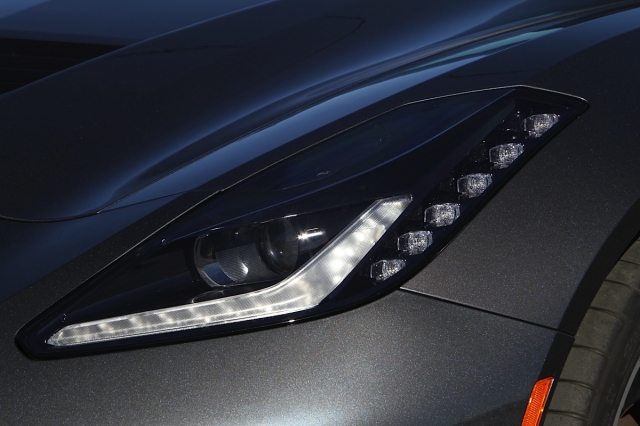 We have had a lot of other loaner cars here in the office, mostly Fords. There has NEVER been a fight for the keys to take a test drive like there is for this car. Everyone wants to take a shot at the Stingray, and everyone comes back with a smile on their face. Nobody pitches in for gas, however. This is a basic inequity of having a borrowed Corvette.
We have had a lot of other loaner cars here in the office, mostly Fords. There has NEVER been a fight for the keys to take a test drive like there is for this car. Everyone wants to take a shot at the Stingray, and everyone comes back with a smile on their face. Nobody pitches in for gas, however. This is a basic inequity of having a borrowed Corvette.
Day Four: Launch control makes you look like a hero at the dragstrip. Turning it off makes the track announcer make fun of you over the loudspeakers.
Our contact at GM has asked us not to “track” the car without asking first, because journalists are hell on tires. I email him to ask if it’s OK to take the car to our local dragstrip, promising to drive around the water box, not do any burnouts, and be gentle on it. When a day passes without a reply, I take this as permission granted, and vow to myself to actually not do the things I said I wouldn’t. This will prove to be difficult.
At the track, the Stingray is an attention magnet. There’s not a moment in the lanes when the car doesn’t have at least a half-dozen people crowded around, looking under the hood, and asking if they can sit in it. Fathers ask if they can take a picture of their kid behind the wheel. I magnanimously grant their requests and talk myself hoarse answering questions. No, it’s not mine. Yes, GM let me borrow it for a week. No, I just look more attractive to you because I am standing next to the car.
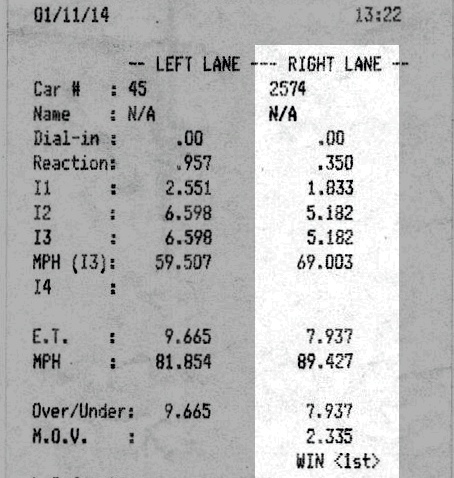 When it comes time to make the first pass, I don’t have high hopes. Track prep here consists of spraying some traction compound, then dragging an earthmover tire on a chain behind an ancient Hardbody pickup. My main goal is to return an intact car, not rotate the earth beneath the tires, so I do my best to skirt the edge of the water box, just blip the throttle and do a little dry hop to knock the pit gravel off the tires, and stage up. MRC and PTM in track mode, I light the stage bulbs on the tree, stand on the brake, then press the throttle to the floor and hope the launch control works.
When it comes time to make the first pass, I don’t have high hopes. Track prep here consists of spraying some traction compound, then dragging an earthmover tire on a chain behind an ancient Hardbody pickup. My main goal is to return an intact car, not rotate the earth beneath the tires, so I do my best to skirt the edge of the water box, just blip the throttle and do a little dry hop to knock the pit gravel off the tires, and stage up. MRC and PTM in track mode, I light the stage bulbs on the tree, stand on the brake, then press the throttle to the floor and hope the launch control works.
Damn, this thing leaves hard…
The first pass nets a 1.833 60-foot time, and 7.937 at 89.42 MPH in the 1/8 mile. This is a legitimate 12-flat quarter mile car right off the showroom floor, and probably high 11’s with a less pudgy driver. It’s also dead-easy to get a perfect launch, provided you don’t think you’re smarter than the guys at GM who programmed the launch control.
I’m no noob at the dragstrip, but pass after pass trying to better the system’s automatic control of wheelspin with my own right foot proves futile. I give up trying, and attack the twisty back roads on the way home from the rural dragstrip.
Day Five: The Stingray is a fun grocery getter, but for some reason a whole day spent running errands and profiling fails to garner much attention. I want to find a crowd gathered around it every time I come back to where I parked, dammit!
While fiddling with the Magnetic Ride Control modes does noticeably change how the car responds when pushed, even in Track mode, it’s not unpleasant on the street. As quickly and dynamically as the dampers react, there’s almost no need for that switch at all – the car is smart enough to know when to firm up, and when to soften. Conceptually, having that dial there is a little like putting artificial “gears” into the programming for a CVT. Switching modes does affect lots of things other than the MRC, but it’s almost superfluous to have that control there. Just let the car figure it out and everything will be fine.
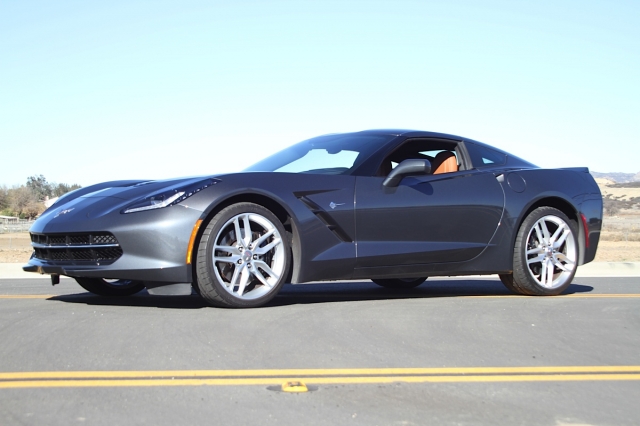 Day Six: The nice man from the GM fleet agency calls to ask if they can pick up the car tomorrow morning. I figure he’s heard every conceivable smartass, “no, we’re keeping it” joke, so I keep it simple and say that’s fine. Inside, I die a little.
Day Six: The nice man from the GM fleet agency calls to ask if they can pick up the car tomorrow morning. I figure he’s heard every conceivable smartass, “no, we’re keeping it” joke, so I keep it simple and say that’s fine. Inside, I die a little.
The last day of our too-brief Corvette holiday is spent taking photos to remember her by, and everyone in the office taking a “goodbye” joyride. I figure I better put some gas in it so the agency driver doesn’t get in and curse at me when he sees the needle on empty. Fortunately the bite hasn’t been that bad; the car has delivered mid-twenties gas mileage overall in the mix of freeway commuting and closed-road-professional-driver antics. The active fuel management is unobtrusive – if you pay attention and have the dashboard in the right mode, you can feel the cut when the display changes from “V8” to “V4”, but you’d never notice it day to day.
Day Seven: “Anything I should know?” the fleet driver asks as I hand him back the keys. “No, sir – It’s in the same condition as it was, minus some tire tread,” I answer. One last look through all the hidden cubbies for left-behind personal effects, and the car is but a memory.
No doubt, this is the best Corvette ever. No doubt, it’s a performance and quality bargain compared against other cars in the same segment. No doubt, I will personally have to wait about ten years for depreciation to work its magic and make C7 ownership possible for impoverished internet editors like me. In the meantime, I strongly suggest that all you good people go out and buy them, and enjoy but take good care of them so that when the day comes, you can trade up to a C8 and I can spend more than a week behind the wheel of a Stingray.